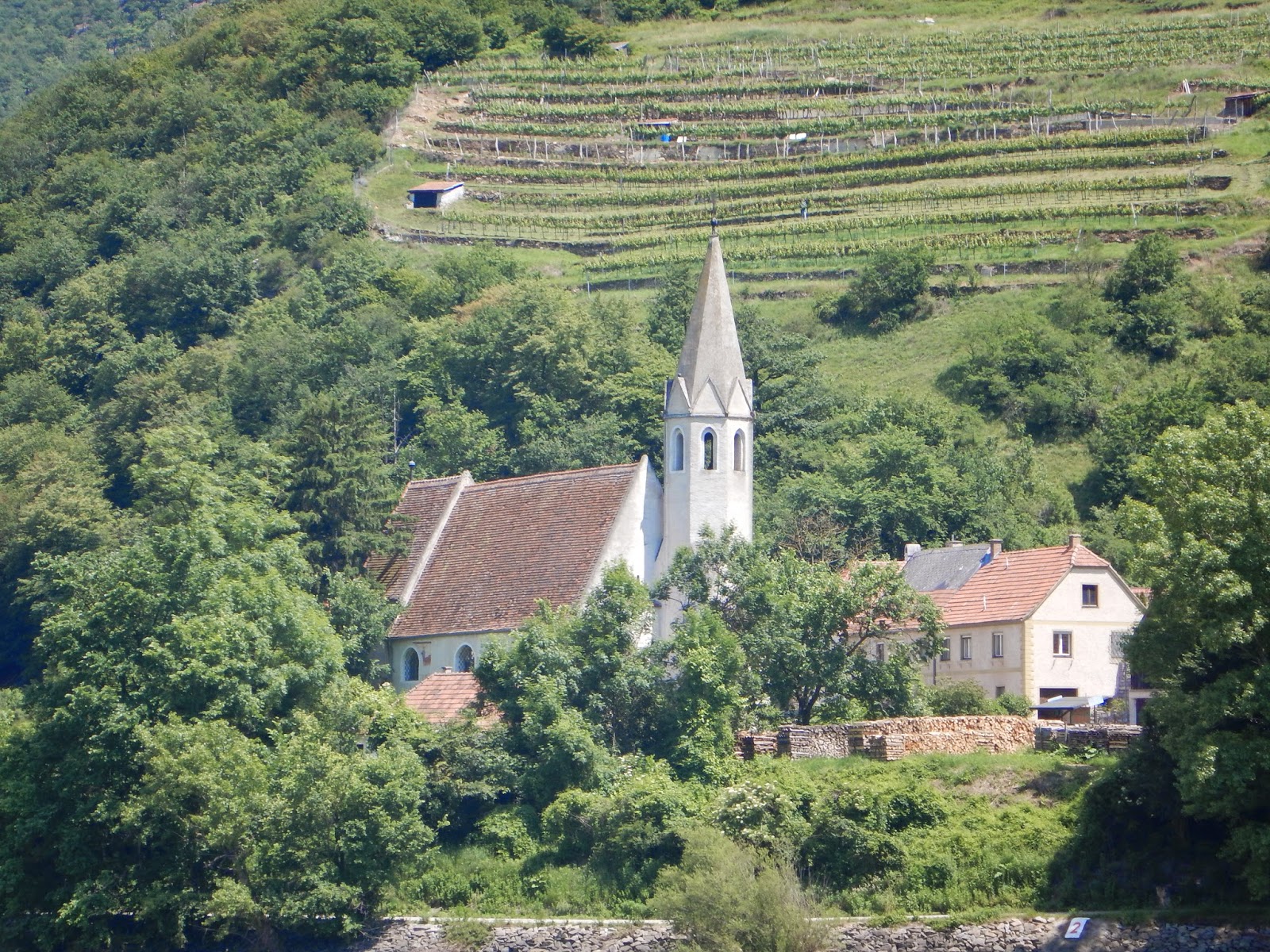Regardless, the Wachau Valley is a
wonderful, wonderful experience. In several villages there appeared a
sculpture, of sorts. It is a tradition that at the beginning of the year the
largest tree in the area is cut down. Then it is mounted on a very high post
and adorned with ribbons and such. The tree sculpture stands throughout the
year, providing pagan safety and luck to the villagers. It is quite a lovely
tradition and almost every small village we passed had one somewhere close by.
We passed the small village of
Willendorf, of ‘Venus of Willendorf’ fame, the small primitive naked statue
that is said to represent the goddess of fertility The statue is estimated to
be 25,000 years old and is on display at the Natural History Museum in Vienna further
up the river. The Venus of Willendorf
has always been a favourite of mine and I remember writing extensively about
her for an anthropology paper way, way back when I did my undergraduate degree.
We also passed the Burgruine Aggstein,
which is a remnant of a 12th century castle. It is up on a craggy
tor and its notoriety is due to the robber barons of Schloss Schonbuhel and
Burg Agstein, who imprisoned their rivals for ransom and, if no ransom was
forthcoming, they tied them to a rock ledge and eventually killed them by
throwing them into the gorge. Ah, intrigue and murder.
As we came to the end of the Wachau Valley,
where the Danube narrows, we came upon the medieval town of Durnstein which
features a very picturesque bright blue Baroque church. It is in this tiny
town, in the residences of the Kuenringer knights that Richard the Lionhearted
was imprisoned more than 800 years ago.





















No comments:
Post a Comment